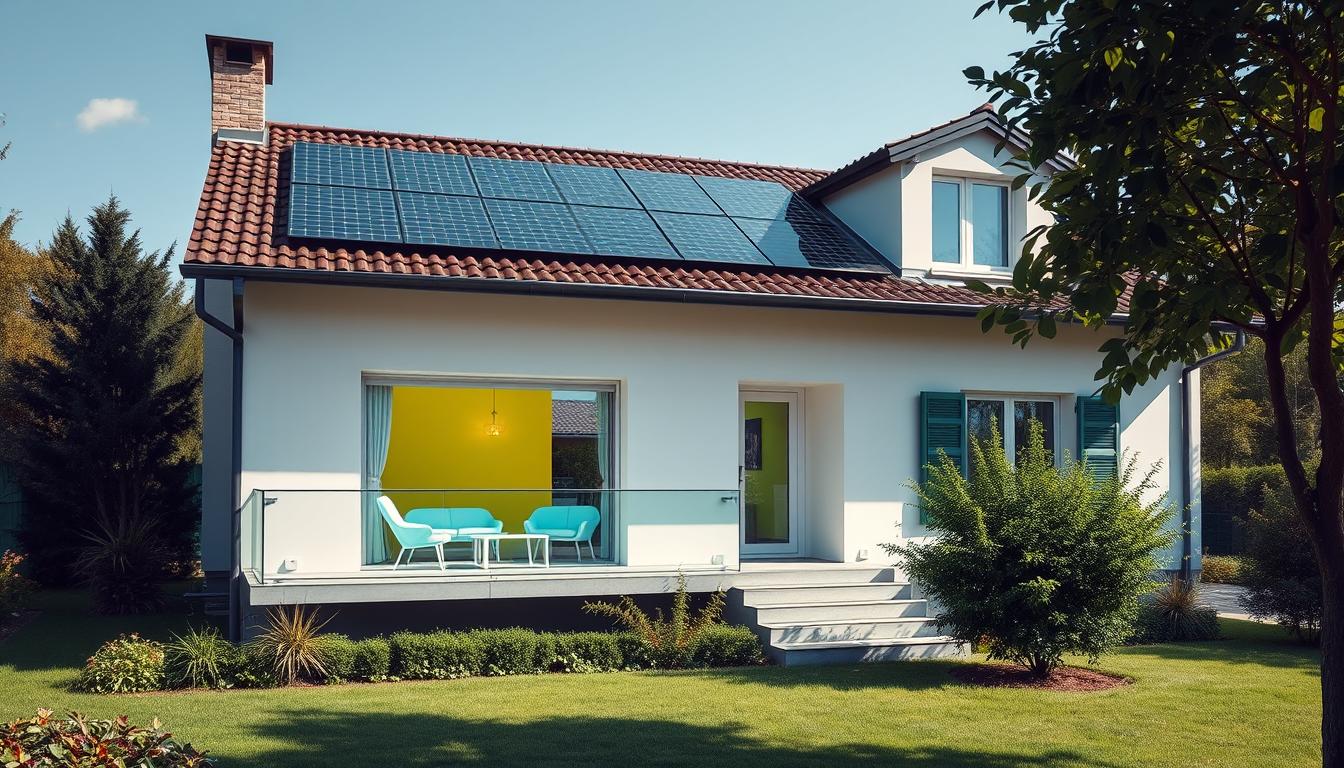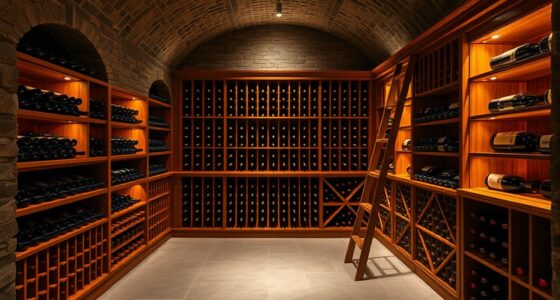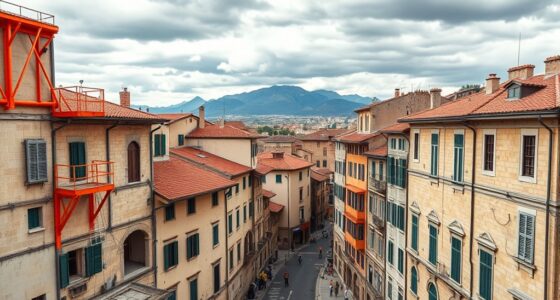When exploring the Italian real estate market, you’ll see “Energy Class G.” It’s the lowest energy rating for buildings in Italy. Buildings in Tuscany need energy certificates if they’re for sale, rent, new, or being renovated1. Since 2012, Italy has required energy certificates to cut down on energy use2.
This certification shows a building’s energy efficiency. It’s important for the building’s value in Italy. Energy efficiency affects how much energy a building uses and its costs2.
Energy Class G means a building uses a lot of energy. This could be because of old construction, bad insulation, or inefficient heating. Over 50% of Italian homes have low energy ratings of “F” and “G3.
Knowing about Energy Class G is key for homeowners and buyers in Italy. It affects a property’s value and how much energy it uses. The EU wants homes to have an “E” rating by 2030 and “D” by 20333.
Key Takeaways
- Energy Class G is the least energy-efficient classification for buildings in Italy1.
- Energy performance certification is mandatory for buildings in Italy, with certificates being valid for 10 years2.
- The energy efficiency rating is expressed in kWh/m² per year and indicates the energy required for heating per square meter under standard conditions2.
- Understanding Energy Class G is crucial for homeowners and potential buyers in Italy, as it can impact the property’s value and energy consumption3.
- Improving energy efficiency can be achieved through various upgrades, such as replacing water heaters and upgrading insulation3.
- Energy efficiency is a key parameter for calculating energy costs and consumption based on the energy source used2.
Understanding Energy Class G in Italian Real Estate
Buying or renting a property in Italy means you need to know about energy classes. The APE certificate shows a building’s energy use. It rates buildings from A4 (best) to G (worst)4.
The APE certificate is key. It shows how much energy a building uses. This depends on the building’s age, insulation, and heating system. EU rules say all buildings in Italy must have this certificate5. It’s needed when you buy or rent a place. It helps you understand your energy use and costs.
Here are some important facts about energy classes in Italy:
- Energy classes range from A4 (most efficient) to G (least efficient)4
- The APE certificate includes the energy performance index and the energy class5
- Buildings with higher energy classes (A4-B) use less energy and cost less4
- Buildings with lower energy classes (F-G) use more energy and cost more4
In short, knowing about energy classes in Italy is very important. The APE certificate and energy performance index tell you a lot about a building’s energy use. This helps you make smart choices about your energy use and costs5.
| Energy Class | Energy Performance Index |
|---|---|
| A4 | 10 |
| G | 1 |
What Does Energy Class G Mean in Italy?
Energy Class G is the least efficient class in Italy, with high energy consumption and lowest energy efficiency6. It includes old masonry buildings without insulation and no heating system6. Most buildings in Italy are in this class, ranging from A4 to G, with G being the least efficient6.
In Italy, many buildings are outdated and classified as Energy Class G6. The energy performance index scores range from 1 (least efficient) to 10 (most efficient)6. Here are some key features of Energy Class G buildings:
- High energy consumption
- Lack of insulation
- Inefficient heating systems
- Low energy efficiency
The EU changed the energy label in 2021, removing A+, A++, and A+++ classes7. Now, the label shows capacity, noise level, and energy consumption7. This helps consumers understand a product’s energy efficiency better7.

Understanding Energy Class G is key for property owners in Italy6. It affects the value and energy costs of their buildings6. By improving energy efficiency, owners can lower energy use and costs6.
Common Characteristics of Class G Buildings
Exploring energy efficiency in Italian buildings, you’ll find Class G buildings often lack poor insulation. This leads to high energy bills8. Built before the 1970s, these buildings consume more energy due to outdated construction8. They also have old heating systems, raising energy costs even more8.
Some common features of Class G buildings include:
- Older construction methods and materials
- Inadequate insulation of walls and floors
- Outdated heating systems
These traits lead to higher energy use and bills8. It’s key to know that better energy efficiency can boost property value9.
Recent data shows nearly 60% of Italian homes have poor energy ratings. There’s been a slight drop in F and G ratings since 20208. This shows the need for better energy efficiency, especially in Class G buildings. Knowing these common traits helps you improve energy use and lower costs8.
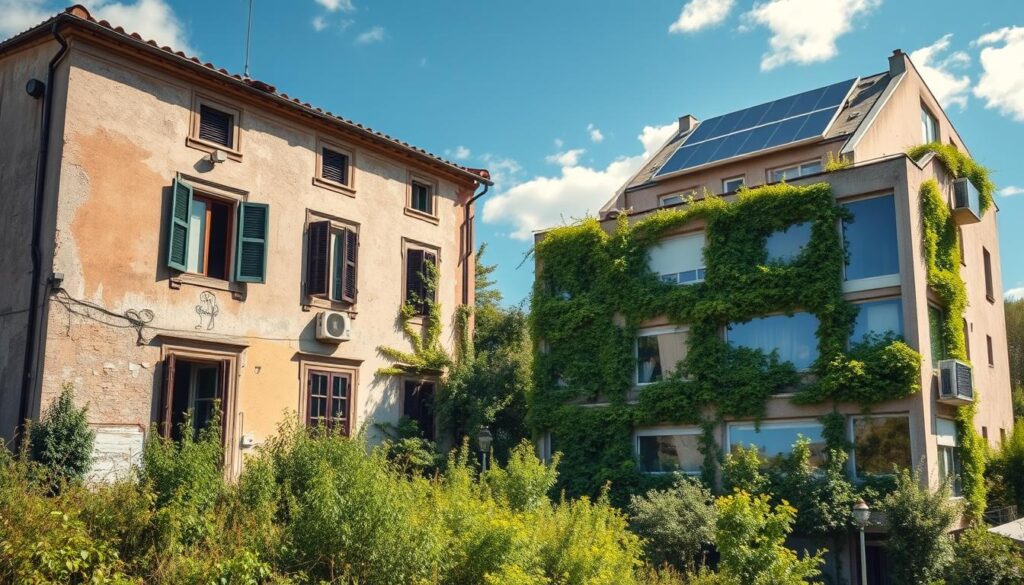
Improving poor insulation and outdated heating systems can cut high energy bills. This makes Class G buildings more energy-efficient8. It’s good for the planet and increases your property’s value and comfort9.
| Energy Class | EPGL Indicator |
|---|---|
| A4 | 0.4 |
| G | 3.5 |
This table shows the big difference in energy use between A4 and G classes8. Striving for better energy efficiency reduces environmental harm and saves on energy bills8.
The Financial Impact of Owning a Class G Property
Owning a Class G property in Italy can lead to big financial challenges, especially with high utility costs and renovation expenses10. Since about 60% of buildings in Italy are in class F or G10, knowing the financial effects is key. The civil sector in Italy uses around 45% of final energy and causes 17.5% of direct CO2 emissions11. This can make energy costs higher for property owners.
When thinking about the financial impact of owning a Class G property, consider these points:
- How energy use affects high utility costs
- The costs of renovation expenses to make energy use better
- How the energy class rating can change property value
The European Green Homes Directive wants all new buildings to be zero-emission by 202810. Existing buildings must reach energy class E by 2030 and class D by 203310. This might mean more renovation expenses for owners. Saving energy can be done by using new materials and technologies, following new building standards, and improving building envelopes11.
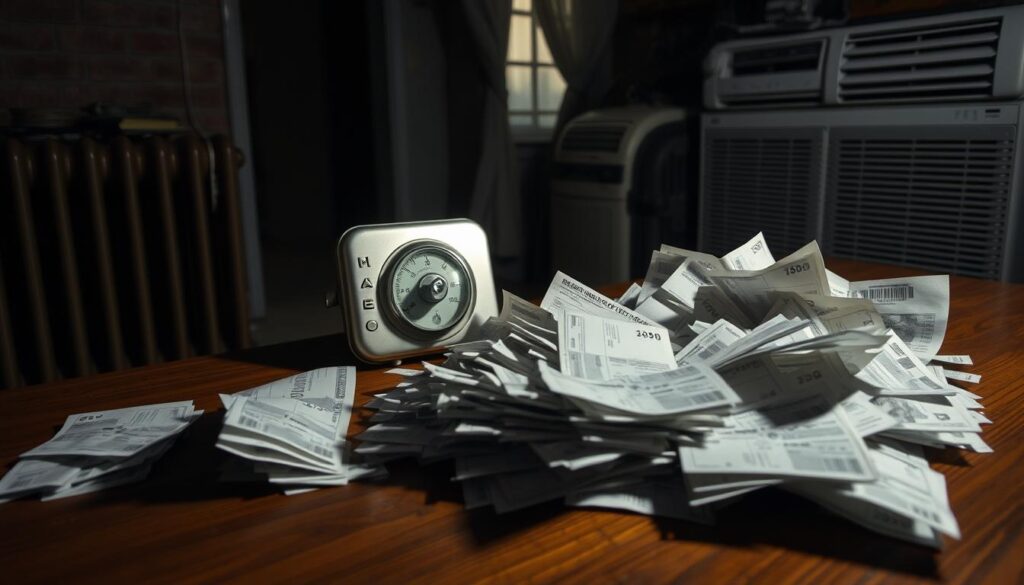
It’s important to check your property’s energy performance and find ways to cut high utility costs and boost energy efficiency. This can also raise your property value2. By understanding the financial side of owning a Class G property and working on energy efficiency, you can make smart choices about your investment. This could also increase your property’s value over time.
How Energy Class G Affects Property Value
When you think about buying or owning a property in Italy, knowing about Energy Class G is key. The APE (Attestato di Prestazione Energetica) is important for buyers and renters. It shows energy use and suggests ways to improve12. With 60% of buildings in Italy being class F or G, it’s important to think about how this affects value and resale options.
Italy’s real estate market is growing by 2% on average13. But, energy efficiency plays a big role. More people want homes that save energy, with 20% valuing homes near services13. The Green Homes Directive aims for zero-emission new buildings by 2028 and energy class E for existing ones by 203010. So, buying a Class G property needs careful thought.
The table below shows how energy classes can affect property values:
| Energy Class | Property Value Impact |
|---|---|
| G | Potential for depreciation due to low energy efficiency |
| F | Lower market value compared to more energy-efficient properties |
| E or higher | Potential for increased market value due to higher energy efficiency |
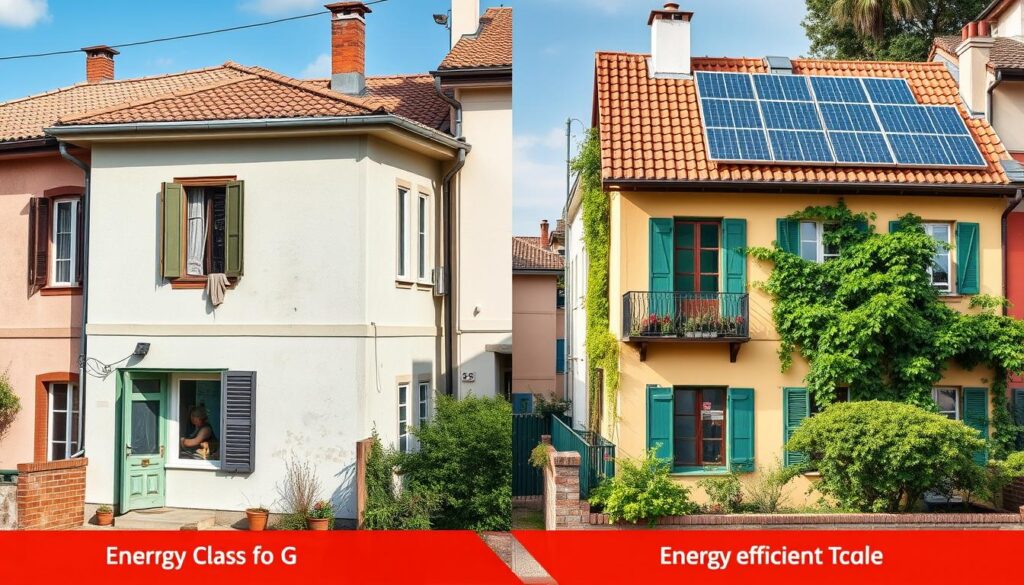
Understanding Energy Class G’s effect on property value is crucial in Italy’s real estate market. By looking at depreciation, buyer wants, and market trends, you can better understand energy efficiency’s role in your property’s value12.
Primary Causes of G Classification
Energy class G is the least efficient among all classes. It includes old masonry buildings without insulation and no heating system6. The main reasons for this classification are a lack of insulation, inefficient heating systems, and old construction methods. These issues lead to poor energy use, causing higher costs.
In Italy, about 70 percent of buildings need to be refurbished, falling into the G class14. This shows the urgent need for energy efficiency upgrades. The Superbonus scheme in Italy helps homeowners with renovations, allowing them to share the tax benefits14.
Important factors for a building’s energy class include:
- Insulation
- Efficient heating systems
- Quality materials
Improving these areas can enhance a building’s energy class, lowering costs6. Knowing the causes of G classification helps in spotting areas for improvement. It also guides you when looking at Class G homes for sale.
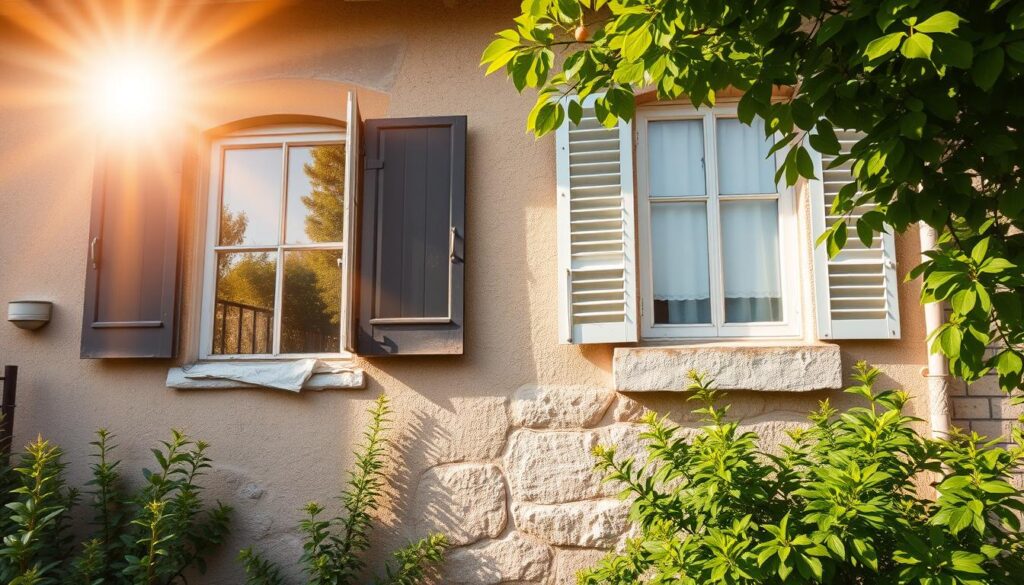
Improving insulation, heating systems, and construction methods is key. It’s a step towards better energy class and less environmental harm6.
Assessing Your Home’s Energy Performance
Understanding your home’s energy efficiency is key. A professional energy audit is crucial for this. It checks how much energy your home uses, including thermal imaging to spot heat loss. The aim is to see how well your home uses energy and suggest ways to make it better, which can raise its EPgl, nren value15.
The audit starts with a visit from a skilled technician. They look at your home’s insulation, heating, and air leaks16. This helps find ways to use less energy and cut down on bills. In Italy, getting an energy performance certificate costs about €120, but prices differ by area15.
Important things to check during an audit include:
- Insulation in walls, floors, and ceilings
- Windows and doors for air leakage
- Heating and cooling systems for efficiency
Fixing these issues can make your home more energy-efficient and valuable16. Plus, being energy-smart is good for the planet and can save you money17.
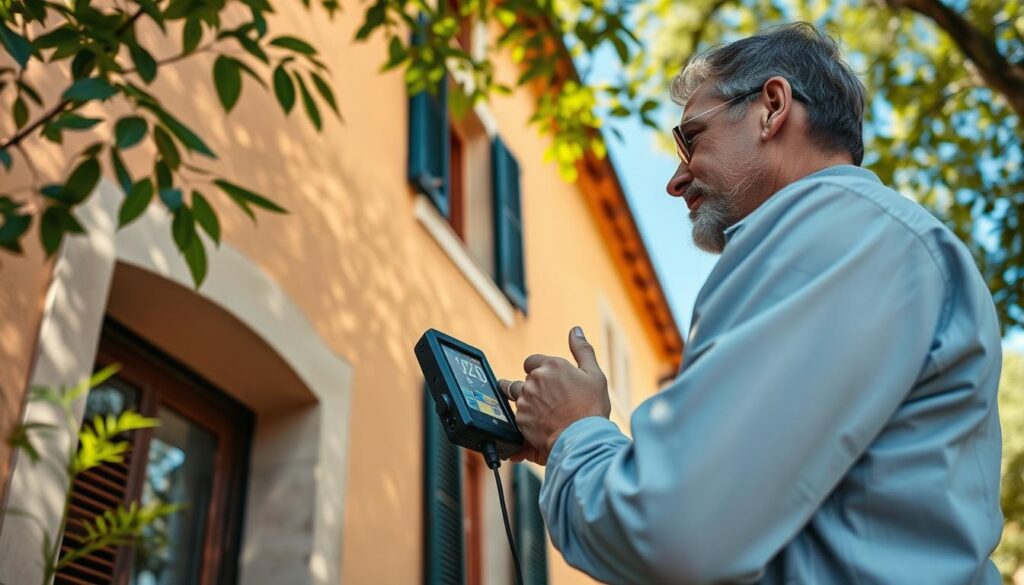
Steps to Improve Your Energy Rating
To boost your energy rating, start with energy-saving upgrades. This includes renovating insulation, windows, and doors18. These changes can cut down your energy use and lower bills. Also, think about adding solar panels or a green roof for more efficiency19.
Some ways to save energy include:
- Switching to energy-saving appliances
- Installing low-flow showerheads and faucets
- Adding insulation to your attic and walls
These steps can save you money and help the planet20.
The energy label system ranks appliances from A to G. Class A uses the least energy, and Class G uses the most20. By picking energy-efficient appliances and making your home more sustainable, you can up your energy rating19.
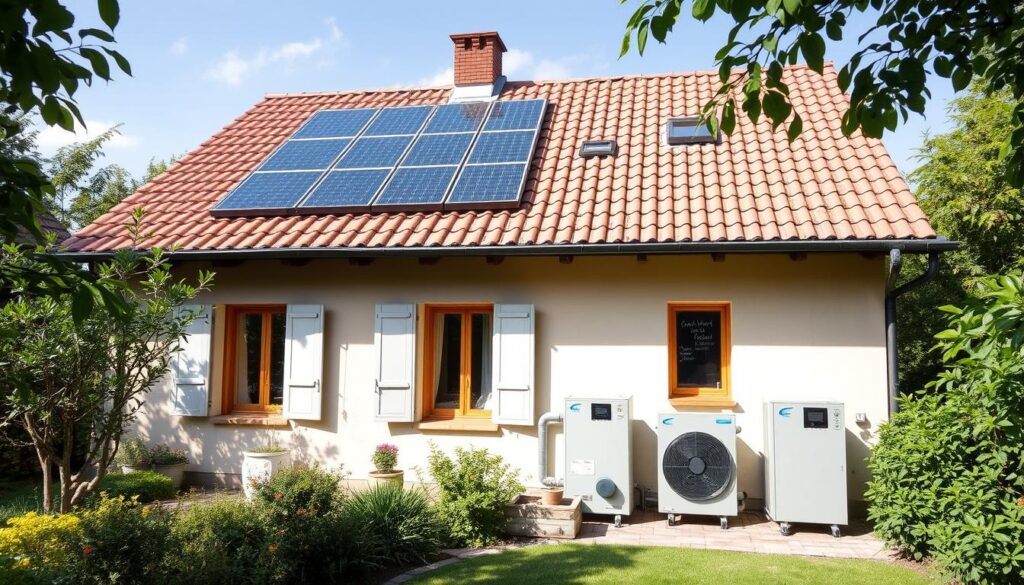
| Energy Class | Energy Consumption | Annual Cost |
|---|---|---|
| Class A | Low | 692.5 euros |
| Class G | High | 4709 euros |
By learning about energy labels and making energy-saving changes, you can lower your energy use. This leads to savings and a greener home18.
Cost-Effective Upgrades for Better Efficiency
There are many ways to make your Class G property more energy-efficient without spending a lot. Adding thermal insulation is a great start. It helps keep the heat in and your energy bills down14. Also, double-glazing windows can cut down on heat loss and save energy21.
Modernizing your heating system is another smart move. Switching to condensing boilers or heat pumps can save a lot of energy and cut down on carbon emissions21. Don’t forget about thermal coatings and roof insulation for a greener, more efficient home.
These upgrades offer many benefits:
- Less energy use and lower bills
- A higher property value
- Better comfort and lower maintenance costs

Investing in these upgrades can make your Class G property more energy-efficient. This not only helps the environment but also saves you money on energy costs14. Look into government incentives and support programs to help fund these improvements and make your home more eco-friendly21.
| Upgrade | Energy Savings | Cost |
|---|---|---|
| Thermal Insulation | 20-30% | €5,000 – €10,000 |
| Double-Glazing | 15-25% | €3,000 – €6,000 |
| Condensing Boilers | 25-35% | €2,000 – €4,000 |
Government Incentives and Support Programs
If you own a home in Italy, you can get help from the government to make your home more energy-efficient. The Italian government has an eco-bonus and tax deductions for energy-saving upgrades. These help lower the cost of making your home more eco-friendly22.
There are also regional programs that offer financial and technical help for energy-efficient home improvements. These programs can give you money, advice, and other resources to boost your home’s energy use23. To get these benefits, you need to follow certain steps and have an energy performance certificate for your home24.
Energy-efficient home upgrades can bring many benefits. For example:
- They can cut down on energy use and lower your bills.
- They can also make your home more valuable and comfortable.
- And they help protect our environment.
By using government incentives and support, you can make your home greener. This helps create a better future for all of us.
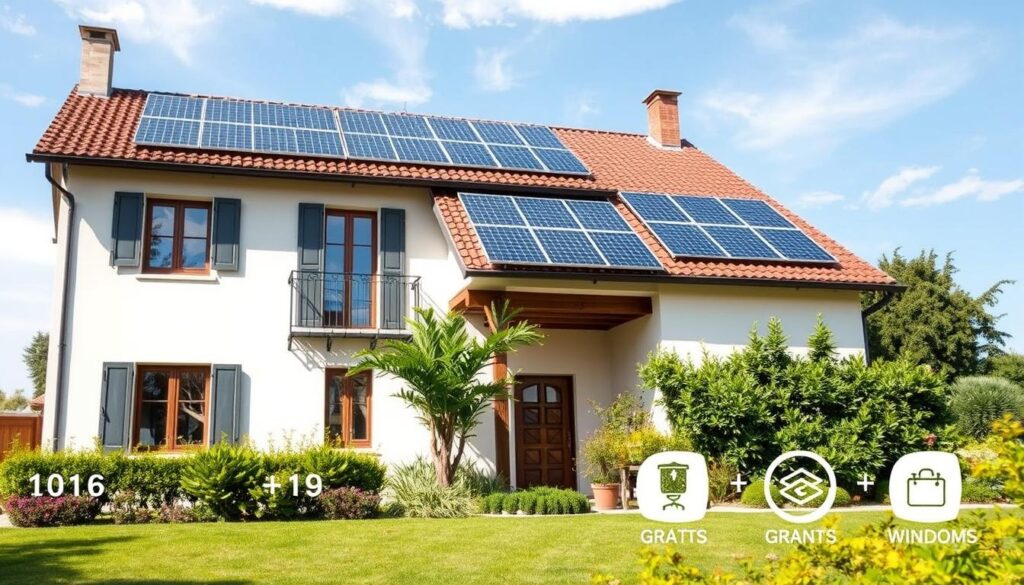
Timeline for Energy Class Improvements
When planning renovations, setting clear energy efficiency goals is key. First, check your property’s current energy class and spot areas for betterment. In Italy, only authorized people can give energy certifications, which last 10 years25. The certificate must list ways to make your building more energy-efficient.
To reach your energy efficiency goals, focus on property upgrades. This might mean buying new appliances, better insulation, or a new heating system. The EU labels appliances from A to G, with A being the best25. In Italy, companies must do energy audits every four years, with the next one in 202726.
Here are some important steps for your renovation:
- Do an energy audit to see how much energy your property uses
- Find out where you can improve and focus on property upgrades
- Make a renovation plan and set achievable energy efficiency goals
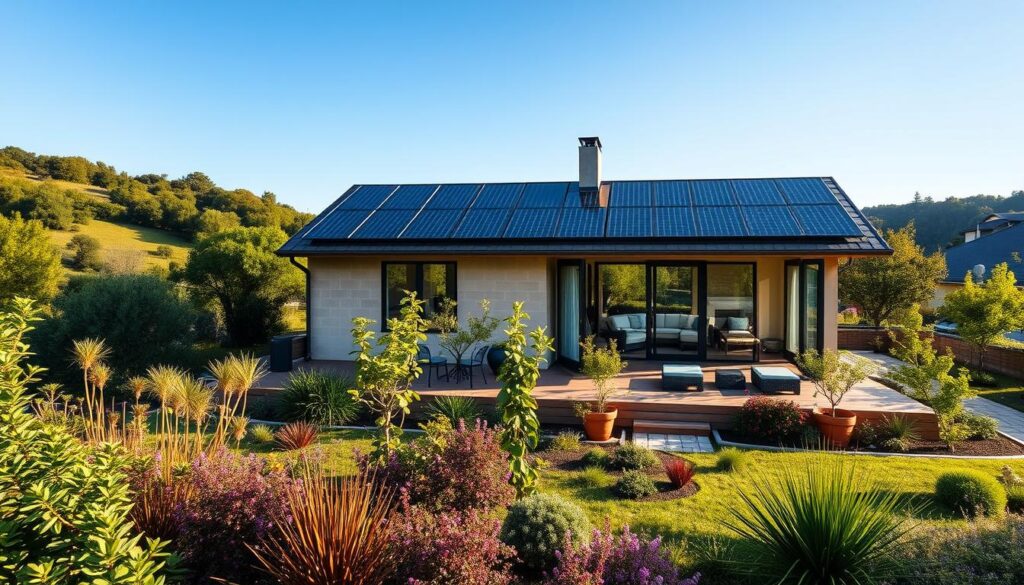
By taking these steps and sticking to your renovation plan, you can meet your energy efficiency goals. Also, look into government help and programs to lower the cost of property upgrades26.
| Energy Class | Energy Efficiency |
|---|---|
| A | Most Efficient |
| G | Least Efficient |
Conclusion: Taking Action on Your Energy Class G Property
Owning an Energy Class G property in Italy has its ups and downs. The low energy efficiency might seem tough, but it also offers a big chance to improve2728. By making your home more energy-efficient, you can cut down on energy costs. You might also increase your property value and help the environment.
Improving your home’s energy use is good for more than just your wallet. It also helps Italy save on energy and reduce pollution27. This teamwork is key to Italy’s goal of a greener future.
Don’t see your Class G property as a problem. Instead, see it as a great opportunity to make your home better. With government help, expert advice, and smart choices, you can make your home more comfortable and valuable. You’ll also help the planet and save money.
FAQ
What is the importance of energy efficiency in the Italian real estate market?
How does the Italian energy classification system work?
What does Energy Class G mean for a property in Italy?
What are the common features of Class G buildings in Italy?
How does the financial impact of owning a Class G property differ from a more energy-efficient home in Italy?
How can an Energy Class G rating affect a property’s value in the Italian real estate market?
What are the main reasons why properties in Italy receive a G classification?
How can homeowners assess their property’s energy performance in Italy?
What are some cost-effective upgrades to improve a Class G property’s energy efficiency in Italy?
What government incentives and support programs are available in Italy for homeowners looking to improve their property’s energy efficiency?
Source Links
- https://preciousvillas.com/what-is-the-energy-certification-in-italy/
- https://www.gate-away.com/blog/expert-building-energy-efficiency-rating-explained/
- https://dolce-living.com/post/ape-italy-energy-guidelines/
- https://www.windowo.com/blog/energy-class
- https://www.idealista.it/en/news/property-sale-italy/2019/05/16/2476-future-energy-efficiency-home-italy
- https://blog.casaomnia.it/en/energy-certification/
- https://www.enel.it/en/offerte/elettrificazione/usi-consumi/classe-energetica-elettrodomestici
- https://www.fantinicosmi.it/en/energy-classification-how-to-achieve-the-highest-classes/
- https://www.interimmobiliagency.it/en/energy-class-its-importance-in-property-purchase-or-rental/
- https://www.mdpi.com/2075-5309/13/12/2994
- https://energy.ec.europa.eu/system/files/2021-12/2020_ltrs_italy_-_en.pdf
- https://air.iuav.it/retrieve/c0cec523-521b-40fd-82fc-95bb55fddc49/buildings-13-02994.pdf
- https://mlsforum.org/the-italian-real-estate-market-a-quick-and-essential-guide/
- https://www.rockwool.com/group/advice-and-inspiration/blog/renovation-gets-a-super-boost-in-italy/
- https://www.canaleenergia.com/rubriche/speak-english/energy-performance-certification-average-cost-in-italy-120/
- https://detulliolawfirm.com/italian-energy-performance-certificate-epc-attestato-di-prestazione-energetica/
- https://re.public.polimi.it/bitstream/11311/971857/4/Italian local codes for energy efficiency of buildings_11311-971857_Masera.pdf
- https://www.abengineeringsrl.it/en/diagnosis-energy-performance-certificates
- https://azarovs.com/energy-class-g-what-does-it-mean-and-when-is-it-beneficial
- https://europa.eu/youreurope/business/product-requirements/labels-markings/energy-labels/index_en.htm
- https://www.youris.com/energy/ecobuildings/making-co-owned-buildings-energy-efficient-a-eu-lab-in-rome.kl
- https://www.ca-epbd.eu/Media/638373598968137658/Implementation-of-the-EPBD-in-Italy-2020.pdf
- https://detulliolawfirm.com/energy-efficient-buildings-the-future-of-real-estate-in-italy/
- https://www.mdpi.com/1996-1073/16/11/4483
- https://en.wikipedia.org/wiki/European_Union_energy_label
- https://www.alens.it/en/energy-audit-2027-a-guide-for-energy-intensive-enterprises/
- https://energy.ec.europa.eu/document/download/abbfb970-2bb9-45af-9665-53005a2c113d_en?filename=ItalyNEEAP2014en.pdf
- https://www.carel.com/blog/-/blogs/what-s-the-latest-on-energy-labelling-in-europe-

